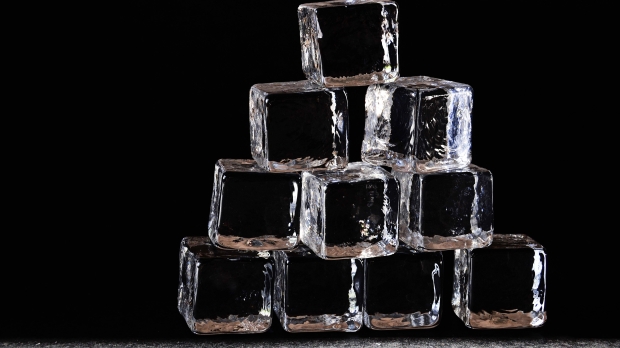A new study on the discovery was published in the journal Physical Review Fluids.
Phase changes in water are well understood by most; heating ice (solid) makes water (liquid), and heating water produces water vapor (gas). Enter the Leidenfrost effect, first described in a 1751 publication, which refers to a phenomenon where a water droplet placed on an aluminum plate heated to at least 150 degrees Celsius (302 degrees Fahrenheit) will not boil.
As the droplet approaches the plate, water vapor will form between it and the plate, cushioning the liquid and preventing it from making direct contact with the plate, allowing it to slide around on the surface in a similar fashion to an air hockey puck. Associate Professor Jonathan Boreyko and graduate fellow Mojtaba Edalatpour sought to investigate if ice would produce a similar effect.
"There are so many papers out there about levitating liquid, we wanted to ask the question about levitating ice. It started as a curiosity project. What drove our research was the question of whether or not it was possible to have a three-phase Leidenfrost effect with solid, liquid, and vapor," said Boreyko.
They found that to recreate the Leidenfrost effect with ice, the temperature of the aluminum plate had to be at least 550 degrees Celsius (1022 degrees Fahrenheit). Before that temperature, the ice was resting on the liquid meltwater layer, keeping the bottom side in contact with the aluminum plate and making it boil at 100°C (212°F) while maintaining a 0°C (32°F) temperature on the side in contact with the ice. Significantly more energy was required to create the levitation after ove (rcoming the temperature differential in this layer.
"The temperature differential the ice is uniquely creating across the water layer has changed what happens in the water itself, because now most of the heat from the hot plate has to go across the water to maintain that extreme differential. So only a tiny fraction of the energy can be used to produce vapor anymore," said Boreyko.
"It is much harder to levitate the ice than it was to levitate the water droplet. Heat transfer plummets as soon as levitation begins, because when liquid levitates, it doesn't boil anymore. It's floating over the surface rather than touching, and touching is what causes it to boil the heat away. So, for heat transfer, levitation is terrible. Boiling is incredible," continued Boreyko.
You can read more from the study here.



